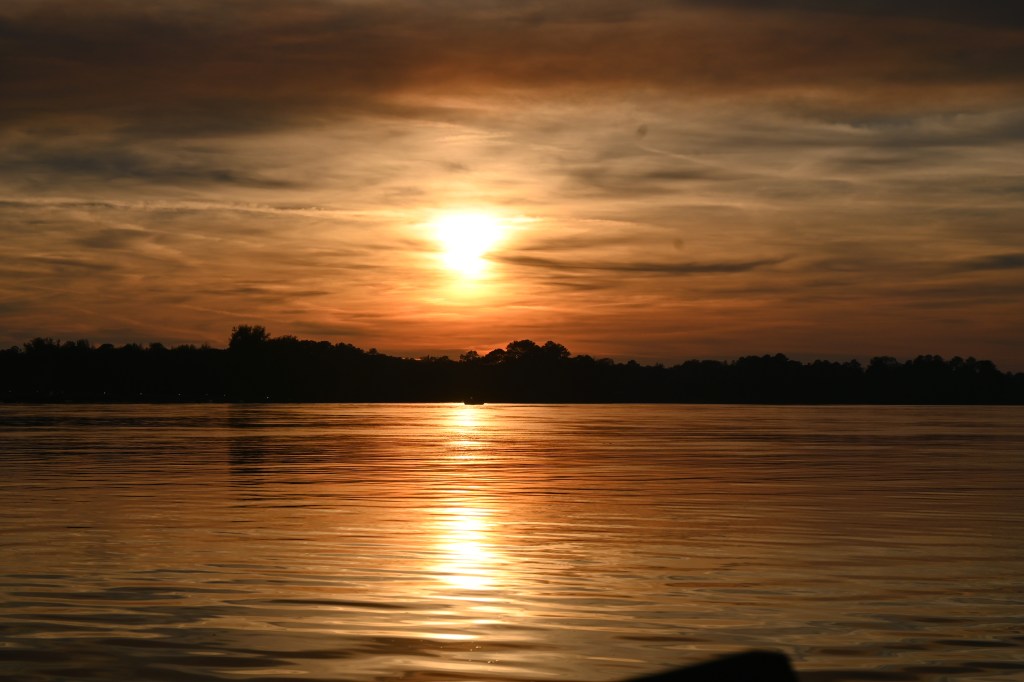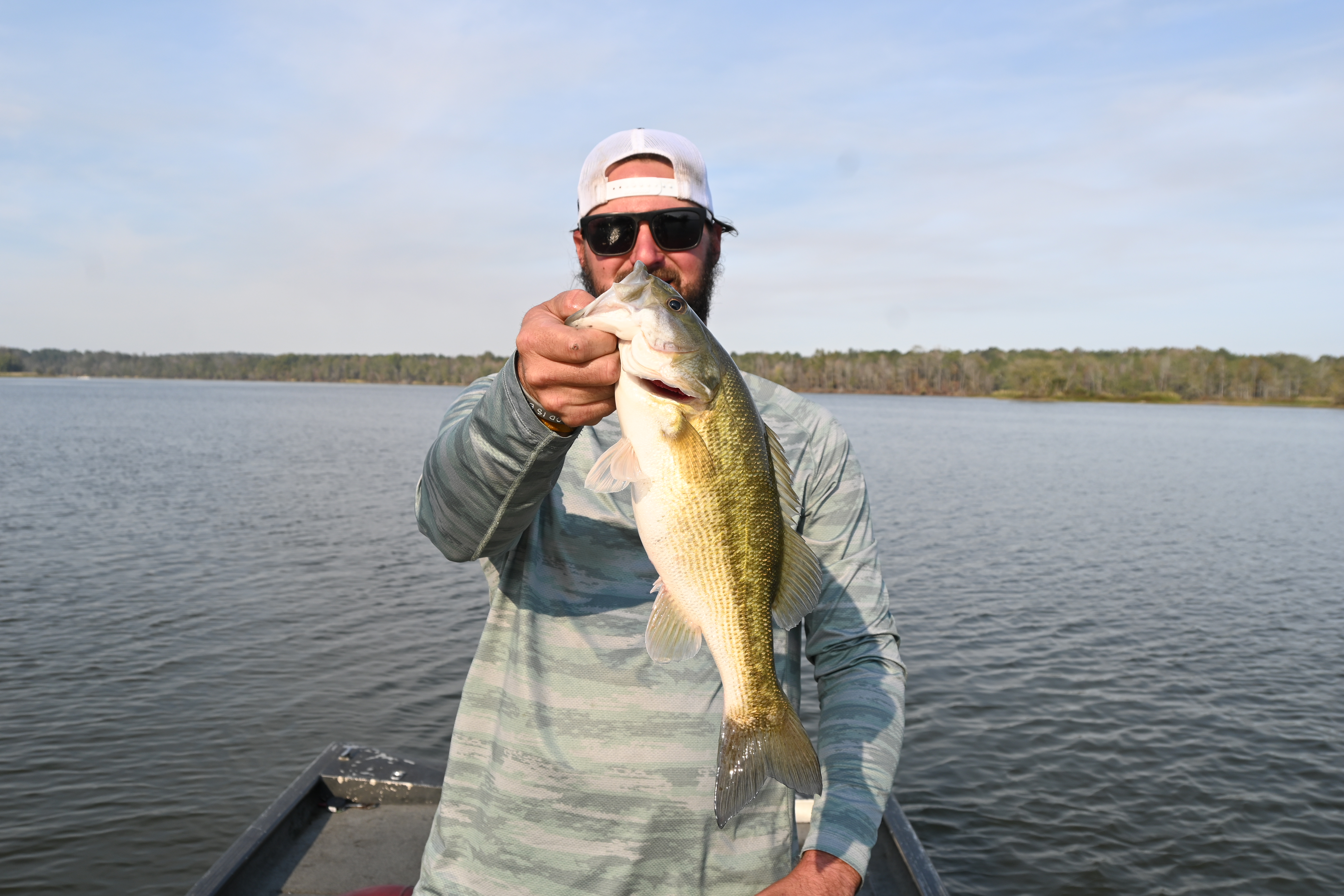
It’s mid-November in Alabama, and the weather has been anything but normal. For the past month, highs have bounced between 70 and 80 degrees, leaving the bass—and us—scratching our heads. My husband, Josh, and I have been hitting the water consistently these past three weeks, chasing that ever-elusive pattern. Some days, we’re reeling in 14- to 15-pound bags, and others, we can’t even land one fish. This weekend was no exception, with Logan Martin Lake offering up its share of challenges and surprises.
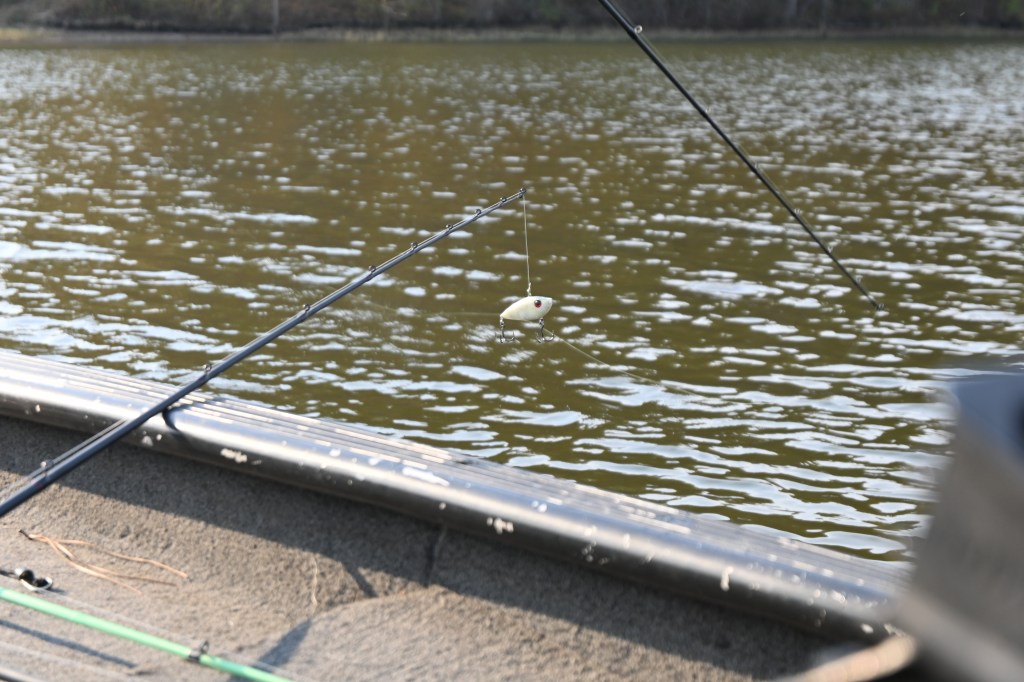
The forecast called for a high of 75, with no clouds and barely a breeze. We launched in Pell City for a fun afternoon of fishing. The water temperature held steady at 69 degrees, and baitfish were schooling and popping all around us. We kicked off the day by covering the flats with a rattle trap, hoping to capitalize on the action.
Our persistence paid off—briefly. We hooked into a solid 4-pounder and a 3-pound bass, but both managed to shake off halfway to the boat. Frustrated but not defeated, we decided to switch up tactics.
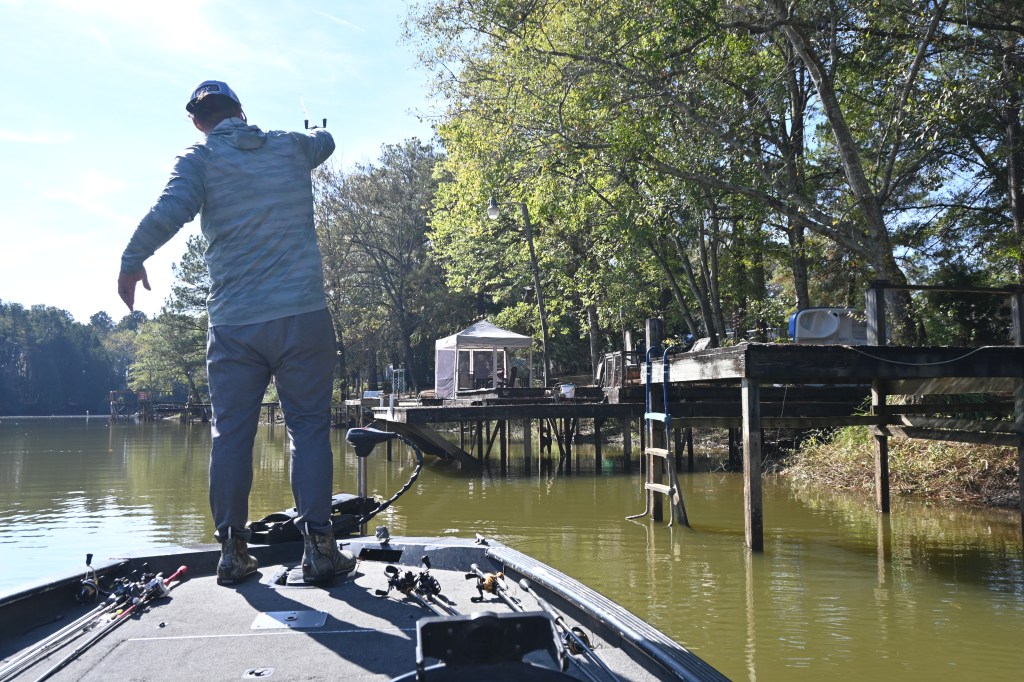
With the sun high and water still, it was time to find shade. We grabbed our trusty Junebug-colored baby brush hogs and started flipping docks. That move turned out to be a game-changer. The bass were tucked deep into shadowy spots under the docks, likely avoiding the heat and waiting for better feeding conditions. It wasn’t fast and furious, but we managed to pull out a few keepers.
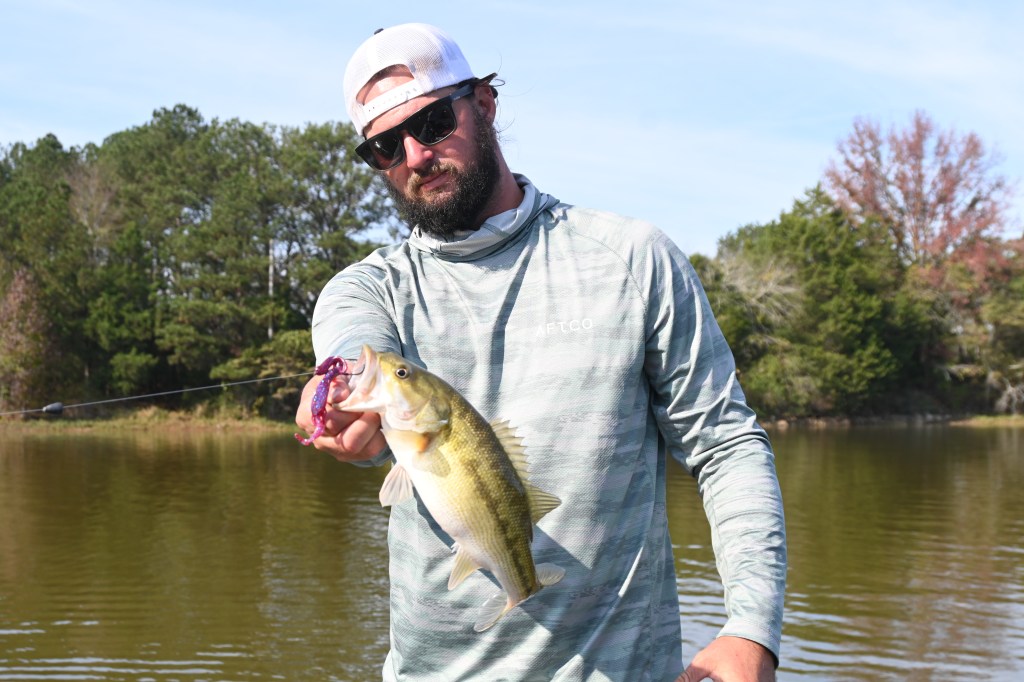
Later in the day, we decided to get adventurous. Josh had been eyeing a secluded creek for a while—a spot not many anglers can access. Thanks to our old 17-foot Xpress aluminum boat, we were able to navigate the narrow drain that led to this almost-private stretch of water. While the area looked promising, with plenty of docks and brush to flip, it wasn’t as productive as we had hoped. We caught a few fish but not the big ones we were after. Still, it was a fun detour, and we were glad we explored it.
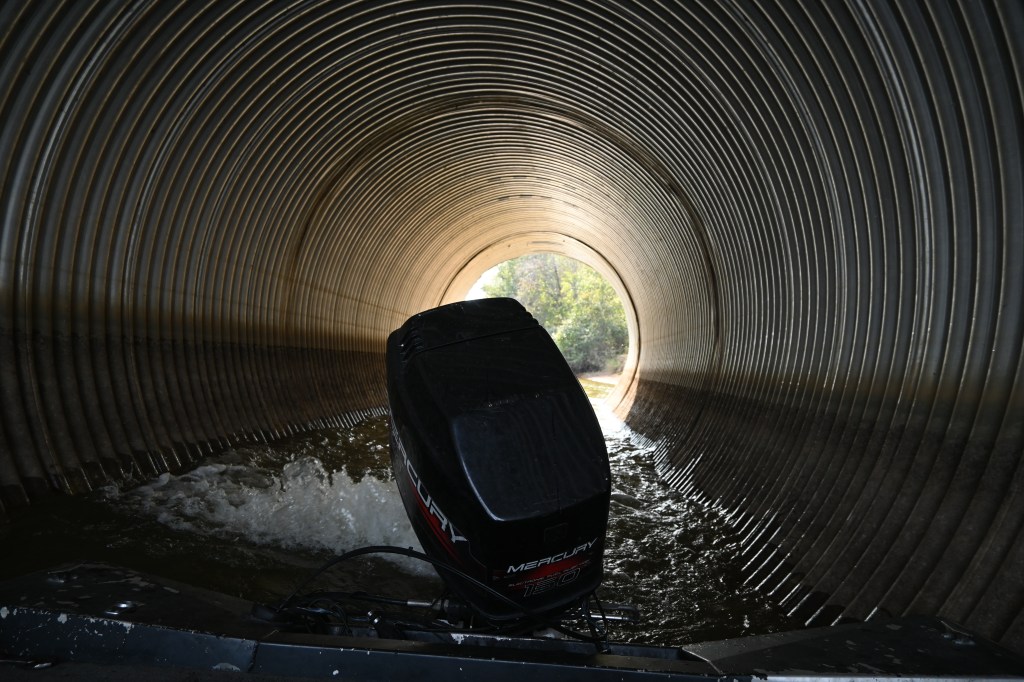
As the day wound down, the current finally picked up, and we headed back to the flats with our rattle trap in hand. The timing was right, and we landed one of the better fish of the day before calling it quits.
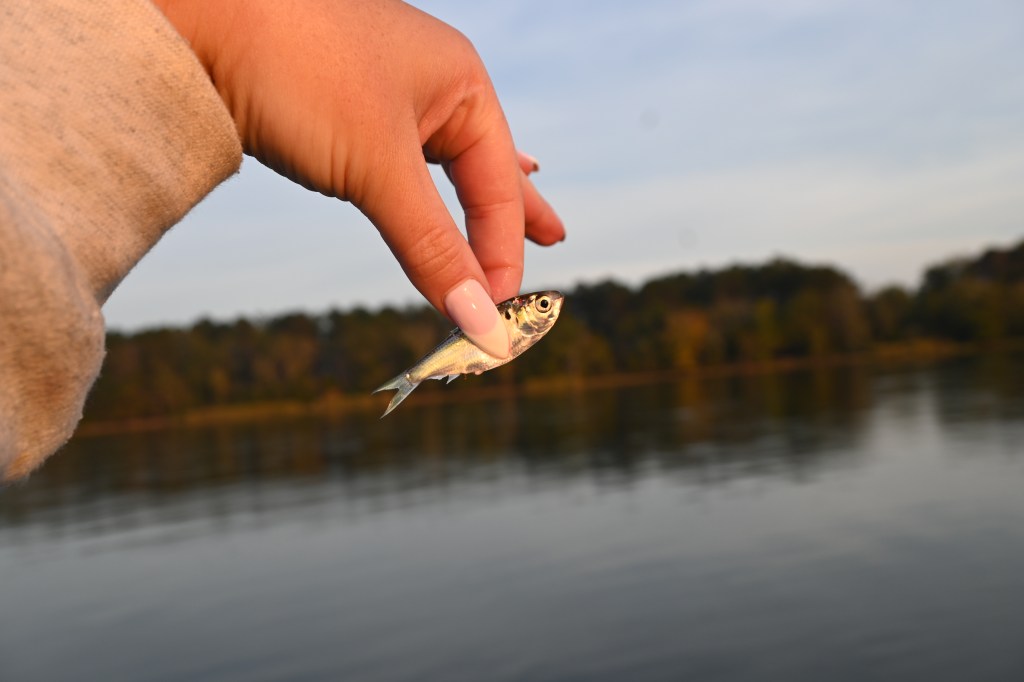
What’s Normal This Time of Year in Alabama?
By mid-November, Alabama usually sees cooler weather with highs hovering in the 50s and 60s, and water temperatures typically range from 55 to 65 degrees. Leaves are almost fully down, and lakes are in prime fall transition mode. Baitfish tend to move shallow as bass actively feed to fatten up for winter. Anglers can often find success by targeting shallow flats with crankbaits, jerkbaits, and spinnerbaits.
However, this year has been far from typical. Unseasonably warm temperatures have kept the water around 69 degrees, delaying the fall bite. The bass seem confused about whether to stage shallow or remain in transition zones. Some days, they’re aggressive in flats and around baitfish, while other days, they’re locked onto structure in deeper water. It’s as though they’re waiting—just like us—for the temperature drop to signal a clear seasonal shift.
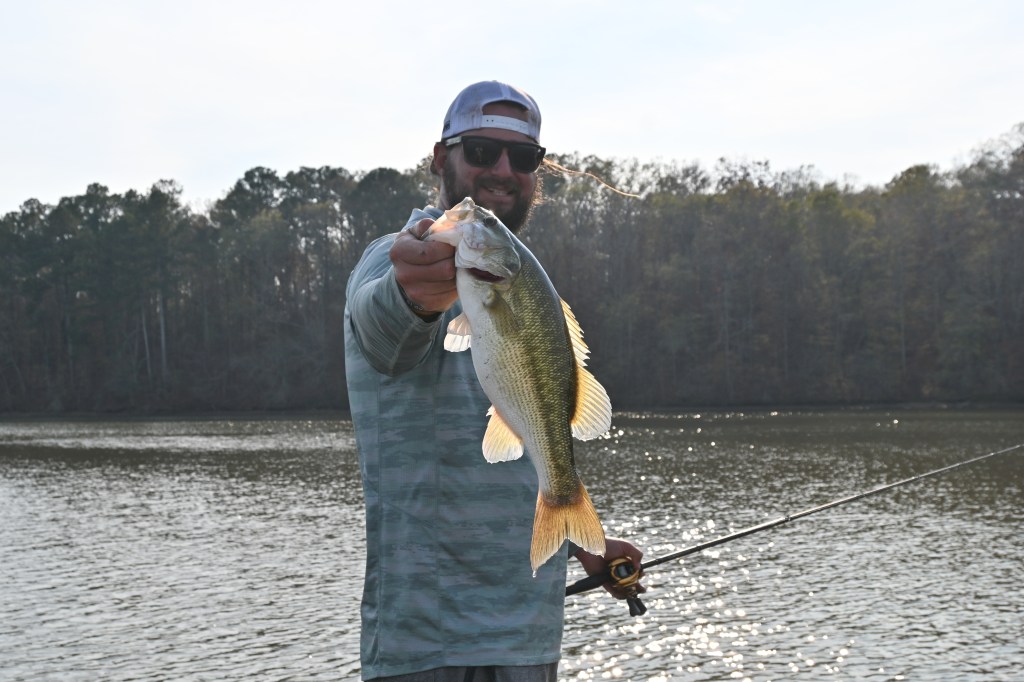
What’s Likely to Happen Next?
With the weatherman predicting highs in the 50s and 60s this week, we’re expecting the water temperatures to finally drop into the low 60s, or possibly even the upper 50s if the cooler nights persist. This change should prompt bass to shift into their late-fall feeding patterns, where they become more predictable and easier to locate.
In the coming weeks, anglers can expect:
- More consistent feeding: Bass will likely push shallow as baitfish move closer to the banks.
- Better reaction-bait bites: Lures like crankbaits, jerkbaits, and spinnerbaits should become more productive as fish become more active.
- Colder water adjustments: Bass may start holding tighter to structure, particularly near ledges and drop-offs, as the temperatures continue to drop.
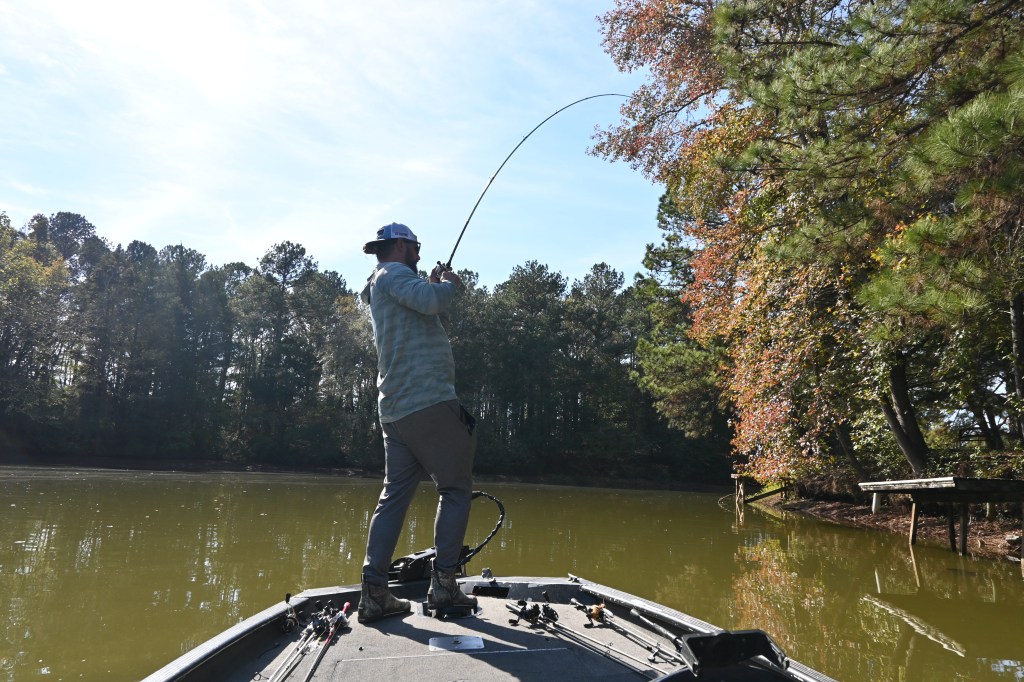
Game Plan for the Weekend
If you’re planning to fish this weekend, here are some strategies to consider based on our experience and the predicted weather changes:
- Start with Reaction Baits on Flats: In the morning, target shallow flats with lures like rattle traps, square-bill crankbaits, or spinnerbaits. Focus on areas where baitfish are active, especially if there’s wind or water movement.
- Flip Docks and Structure: As the sun gets higher in the sky, move to shaded areas. Use soft plastics like baby brush hogs or creature baits in darker colors such as Junebug or black and blue. Target docks and brush piles in shallow to mid-depths.
- Check Transition Zones: Keep an eye on deeper water close to flats or creeks. Use a jig or Carolina rig to target fish hanging out near drop-offs or ledges. These spots can hold bass that are hesitant to move shallow.
- Watch for Afternoon Activity: If the current starts flowing later in the day, head back to the flats or main points. Reaction baits like rattle traps or lipless crankbaits can trigger strikes during this window of activity.
- Bring Versatility: Given the unpredictability, keep a variety of lures ready and be prepared to adjust throughout the day. Pay attention to the baitfish activity and water clarity, as these can dictate the best presentation.

Looking Ahead
The leaves are halfway down, and it feels like the bass are just waiting for that cold snap to finally kick them into full fall transition mode. Fishing during these transitional periods can be tricky, but the challenge is part of the fun. Whether it’s flipping docks in the heat of the day or exploring new territory, every trip adds to the story.
With colder weather on the horizon, we’re excited to see how the bass respond. Until then, we’ll keep chasing them on Logan Martin and figuring out the puzzle one bite at a time. If you’re heading out this weekend, good luck, and let us know how you do!
